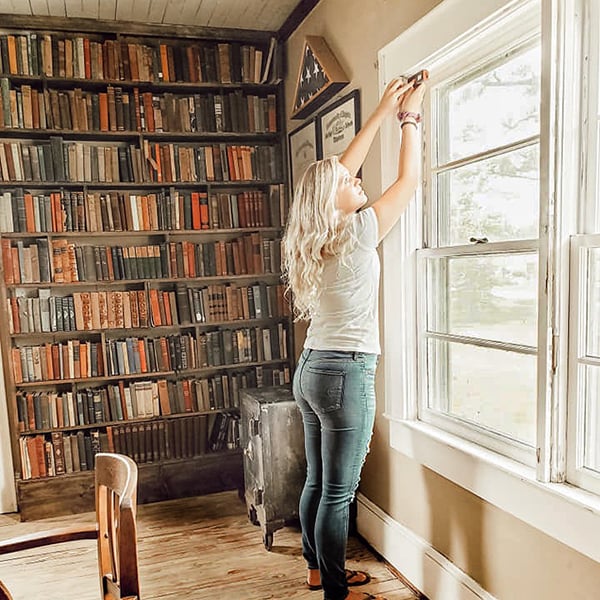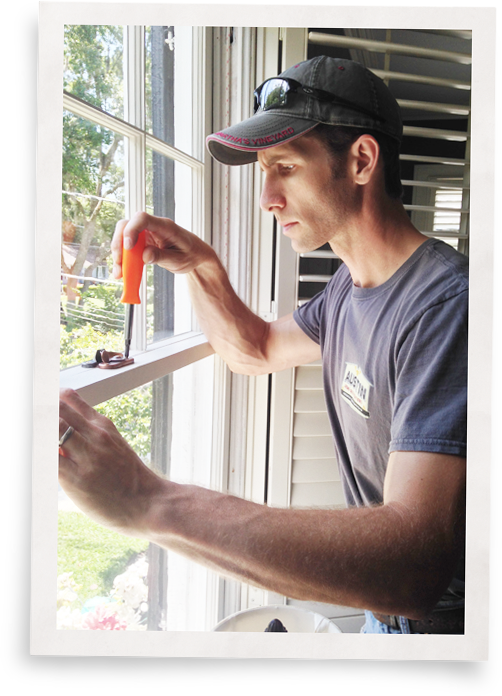Why Historic Windows Matter
Windows are the soul of a building. They let in light and determine how those who live or work in the space see the outside world. The placement and design of historic windows determine the balance and beauty of a structure whether they’re pre-revolutionary war casement windows or Queen Anne double-hung sashes. Replacement windows for old homes robs them of their unique beauty and character.

A historic building with its original windows intact is a gem and can maintain higher property values than one that’s had all its windows replaced. Sadly, the window replacement industry has done a thorough job of convincing homeowners that replacement windows for old homes is a good idea in the name of energy efficiency and saving money. People have taken out mortgages to rip out and replace historic irreplaceable windows and buy new replacement windows they couldn’t afford that ultimately hurt the value of their homes.
New Windows Aren’t the Answer
Making a drafty home more energy efficient doesn’t start with replacing historic windows. The U.S. Department of Energy has found “weatherization to be a more cost-effective option in decreasing energy bills.” And a report by the National Trust for Historic Preservation Green Lab determined how to make windows more energy efficient without replacing them, challenging “the common assumption that replacement windows alone provide the greatest benefit to homeowners.”

Keeping the original, historic windows also preserves the integrity of historic structures. Since older homes have often settled with age, the windows have settled too and are out-of-square in a way that fits the building. But the reason to keep original windows goes beyond that. Historic windows are made of two extremely rare materials: old-growth lumber and handmade, wavy glass.
Durable Old-Growth Lumber
Old-growth wood originates in unharvested virgin forests and can be 200-300 years old. The trees grew slowly since there was limited light and competition from other trees, making the wood dense and rot resistant. Old-growth wood will have many compact tree rings compared with newer wood that is second-growth or grew quickly in tree farms. If properly cared for, old-growth historic windows will last indefinitely.
The Beauty of Handmade Wavy Glass
Today, windows have optically-perfect machine made “float” glass, which was initially manufactured in the late 1950s. Historic window glass was made the same way for centuries: it started with glass blown into cylinder form. Glass blowers would alternately blow and swing molten glass into a cylinder that was cut open to form a “shawl.” It was then placed in an oven slit side up where it wilted into a large sheet of glass. The “cylinder” process was mechanized after 1900 but still often had waves, ripples and air bubbles or “seeds.” The most clear top-grade glass was selected for prominent windows and the second-grade for secondary windows. Finding how to insulate old windows without replacing them in is saving historic windows that were handcrafted in this fashion.

Restoring Historic Windows
Historic wood windows sometimes need to be repaired and restored, which is far better choice than new replacement windows. However, since many contractors aren’t schooled in the art of restoring historic windows, they may not know how to insulate old windows without replacing them. They may even mistakenly advise homeowners their windows are beyond repair.
Depending on the level of repair needed, a homeowner with extra time may be able to do it themselves. If the necessary work is more extensive, there are new resources for finding local window preservation experts. Again, depending on the repairs needed for the historic window, learning how to make windows more energy efficient without replacing them can be a challenge. The Window Preservation Alliance lists people from around the country who can repair and restore old-growth wood windows so they last into the future.

After Restoration: Preserving Historic Windows into the Future
Finding how to make windows more energy efficient without replacing them can be easy. Window inserts, exterior storm windows, caulking, weather stripping, and window treatments such as blinds and curtains can all add efficiency and comfort. Indow window inserts are laser-measured to precisely fit out-of-square windows without using a damaging track or magnetic system. They are edged in silicone and press into the interior of the window frame, making them nearly invisible. Indow window inserts are particularly appealing to owners of older homes because they keep historic windows completely intact while making them perform like new high-end windows. A U.S. Department of Energy study found that Indow window inserts reduced heating, ventilating, and air-conditioning costs by 20 percent.

Why Historic Windows Matter to Us
“The greenest building is the one that is already built,” says Carl Elefante, former president of the American Institute of Architects. The same is true of historic windows. It takes energy and materials to build a new window, and the old window ends up in landfill not doing anyone any good. We know that historic windows can perform just as well as new windows. We know how to make windows more energy efficient without replacing them and we want to share that knowledge.
Replacement windows for old homes only results in loss of character for the home and more materials in landfill. Our mission is to provide you, the homeowner, with comfort, quiet, and savings while helping preserve the environment and historic buildings. Saving historic windows is a big part of that.
